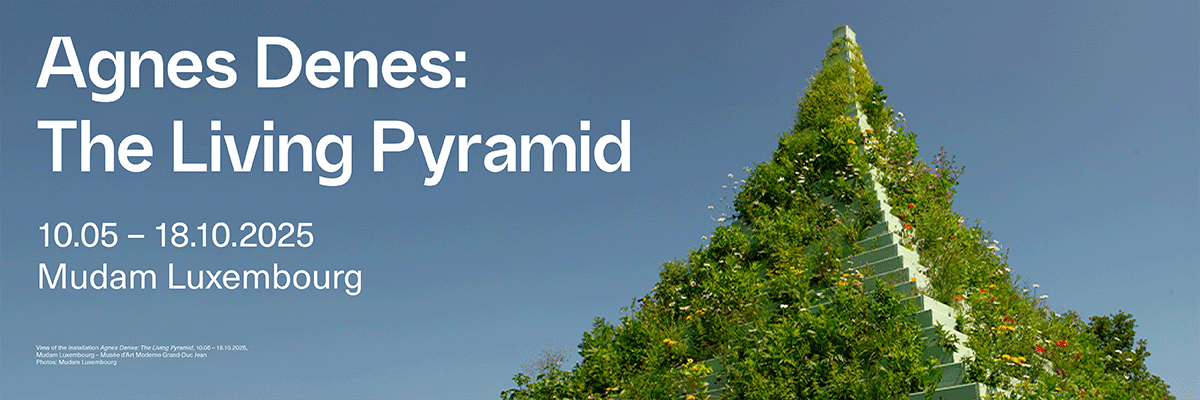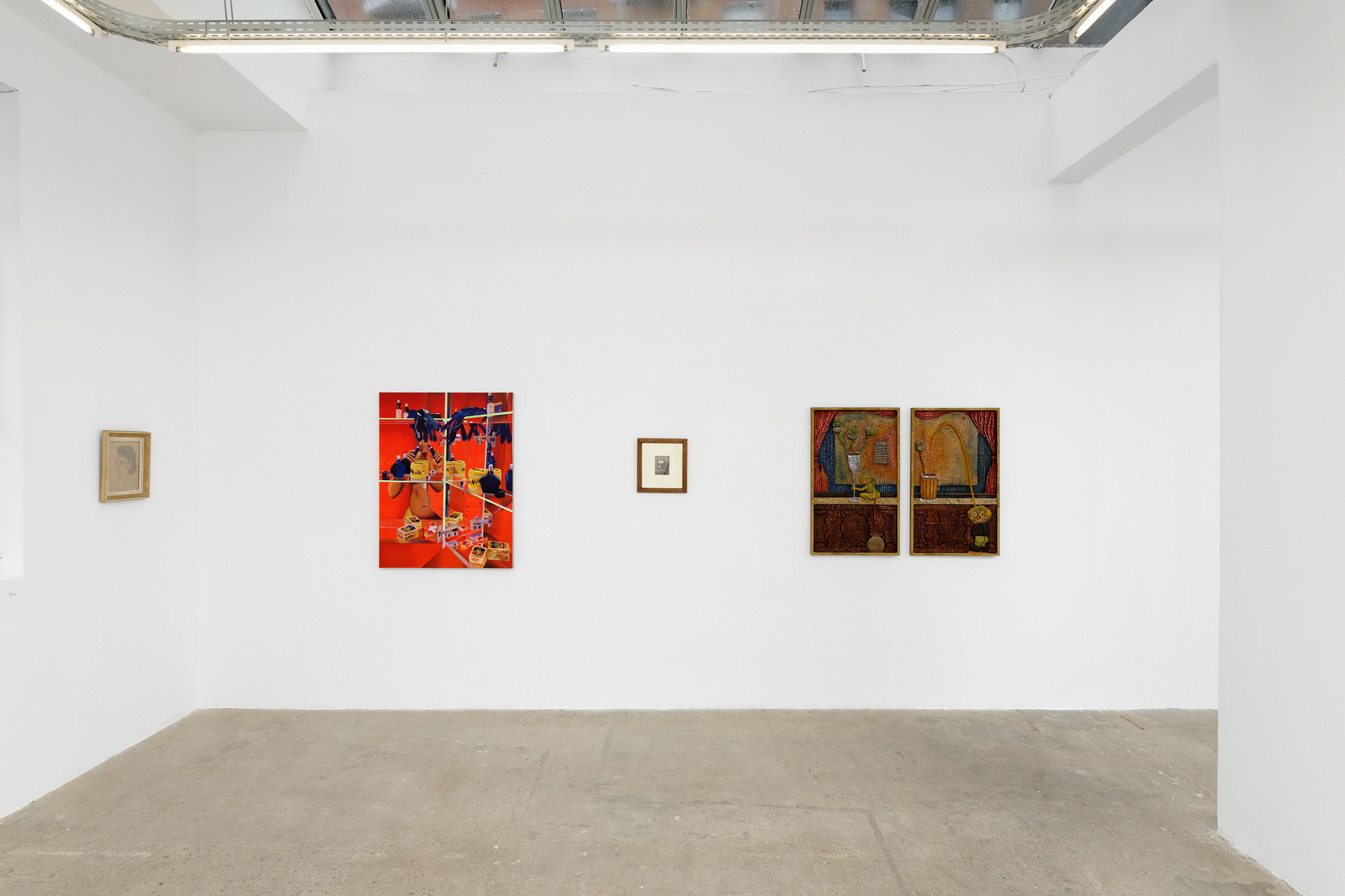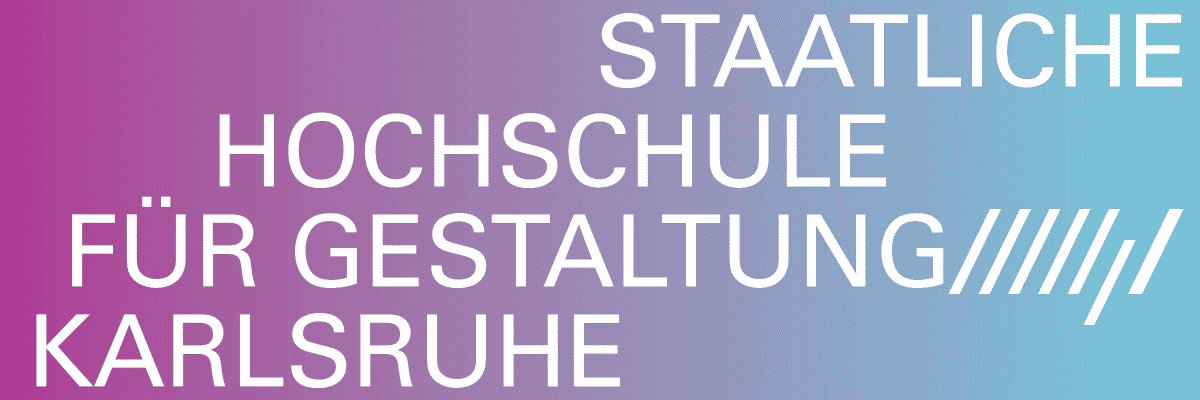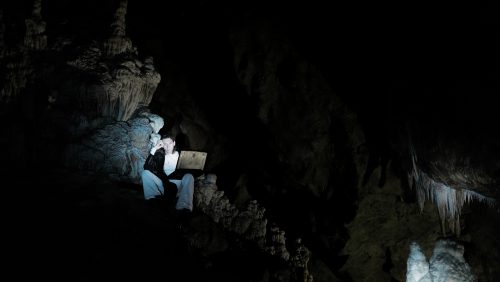
Groupshow
Portraits

Exhibition view, Portraits, Crèvecœur, Paris, 2023. Photo: Aurélien Mole
Advertisement

Niklas Taleb Modern life is still rubbish, modern rubbish is still life (2), 2018 Digital c-print, artist frame, 71 × 105 cm — Ed. 1/3 + 1 AP Courtesy of the artist and Crèvecœur, Paris. Photo: Alexei Kostromin

Exhibition view, Portraits, Crèvecœur, Paris, 2023. Photo: Aurélien Mole

Exhibition view, Portraits, Crèvecœur, Paris, 2023. Photo: Aurélien Mole

Berenice Abbott Portrait de Jacques-André Boiffard, circa 1925 Vintage silver print, 22 × 15 cm | 35,5 × 40,5 cm (framed) Courtesy of Galerie 1900-2000 and Crèvecœur, Paris. Photo: Alexei Kostromin

Exhibition view, Portraits, Crèvecœur, Paris, 2023. Photo: Aurélien Mole

Shana Moulton Moods, 2015 Collage on paper, 38,5 × 29 cm Courtesy of the artist and Crèvecœur, Paris. Photo: Alexei Kostromin

Kyoko Idetsu Calcium (Ca), 2023 Oil on canvas, 45,5 × 27.3 cm Courtesy of the artist, Nonaka-Hill and Crèvecœur, Paris. Photo: Alexei Kostromin

Exhibition view, Portraits, Crèvecœur, Paris, 2023. Photo: Aurélien Mole

Exhibition view, Portraits, Crèvecœur, Paris, 2023. Photo: Aurélien Mole

Exhibition view, Portraits, Crèvecœur, Paris, 2023. Photo: Aurélien Mole

Mathis Collins, Anonymes, 2020 Linden wood, wood tint, acrylic varnish, copper pigments, brass pigments, 90 × 110 cm Courtesy of the artist and Crèvecœur, Paris. Photo: Aurélien Mole

Louise Sartor Dealers, 2023 Gouache on cardboard, diptych, 31 × 68,5 cm Courtesy of the artist and Crèvecœur, Paris. Photo: Aurélien Mole

Exhibition view, Portraits, Crèvecœur, Paris, 2023. Photo: Aurélien Mole

Exhibition view, Portraits, Crèvecœur, Paris, 2023. Photo: Aurélien Mole

Jonny Negron Edges of Illusion, 2023 Acrylic on linen, 106,5 × 81 × 4 cm Courtesy of the artist and Crèvecœur, Paris. Photo: Alexei Kostromin

Florence Henri Composition, Portrait de Pierre Minet, 1938 Vintage silver contact print, 12,2 × 9,2 cm | 30,6 × 33,3 cm (framed) Courtesy of Galerie 1900-2000 and Crèvecœur, Paris. Photo: Alexei Kostromin

Exhibition view, Portraits, Crèvecœur, Paris, 2023. Photo: Aurélien Mole

Hans Bellmer Portrait de femme, 1948 Pencil and heightened gouache on paper, 27,5 × 22,5 cm | 37 × 32 cm (framed) Courtesy of Galerie 1900-2000 and Crèvecœur, Paris. Photo: Alexei Kostromin

Hans Bellmer Sans titre, circa 1925 Pencil on paper, 35 × 24,5 cm | 50,5 × 42 cm (framed) Courtesy of Galerie 1900-2000 and Crèvecœur, Paris. Photo: Alexei Kostromin
Artists: Berenice Abbott, Hans Bellmer, Mathis Collins, Florence Henri, Kyoko Idetsu, Shana Moulton, Jonny Negron, Yu Nishimura, Francis Picabia, Louise Sartor, Niklas Taleb
If the first known portraits date back to the Old Kingdom of Egypt, then from Roman Egypt (with painted funerary “Fayum” portraits inserted into the bands of cloth around a mummy’s face), then the history of portraiture starts with the depiction of an individual destined to the dead and to deities. Out of reach of their contemporaries. Since then, portraits have covered all kinds of vocations: commemorative, glorifying, religious, political, individual, collective, realistic, romantic, naturalistic, bourgeois, social… There’s no point trying to be exhaustive.
This exhibition offers an open sequence of portraits produced between 1925 and 2023 - drawings, paintings, photographs and collages.
Alongside, the masterly project of ‘The Doll’, an artificial being with numerous anatomical possibilities and a Surrealist field of exploration par excellence, Hans Bellmer turned his hand to commissioned portraits so as to survive at a time when he was hard up. Like this Portrait de femme from 1948. A bourgeois portrait.
Concerning his realistic portraits, painted out of necessity, Bellmer said: “A narcissistic aspect is played out in almost all individuals, everyone wants to obtain a portrait of their ideal ego, a non-snapshot which a mirror or photographic film refuses to give. This difference is natural and understandable: a child is intact by definition; it does not fix an image of its ego onto a premeditated exterior image, as a grownup would.”
Jonny Negron, in a highly composed mirror composition (oil on linen), provides a self-portrait in the private sphere. A realistic and intimate portrait of the artist’s bathroom, whose medicine cabinet unveils a psychological portrait. Edges of illusion, 2023.
Florence Henri has photographed Pierre Minet in a mirror that becomes a framed photograph. This print is a pendant to the self-portrait of the artist. An encrypted, constructivist portrait.
Anonymes, 2020. In a puppet theatre staged by Collins, the two characters outrageously doing their business bear characteristics of the artist himself, in a caricature borrowing from a carnivalesque vocabulary. A satirical, grotesque portrait. An artist made a fool of by himself.
Through a play of singular formats (gouache on card), Louise Sartor associates two familiar characters who are holding their phones - the gallerists. A realistic, complicit portrait. Dealers, 2023.
In girl with glasses, 2022, Yu Nishimura propels a natural face into an outlandish scale. A hazy portrait, characteristic of the artist, set off by a subtle shift in the touches. Which places all the elements in the painting on the same level of importance.
This haziness is heightened in this back portrait of a woman, making an everyday gesture, which contrasts with the mysterious, moving atmosphere procured by Niklas Taleb. Modern life is still rubbish, modern rubbish is still life (2), 2018.
A double portrait set in a series of transparencies, “associations between the visible and the invisible”, as Léonce Rosenberg has suggested, whose subjects’ departure points are often figures from classical art, Picabia’s drawing is above all a dialogue with painting itself. In the manner of a tautological portrait.
Kyoko Idetsu has written: I asked my son who was the nicest person he knew. He answered ‘my grandmother’. A familial portrait of a constellation of heroic-tragic characters.
A young man is not looking at the photographer who is taking his portrait. This is Jacques-André Boiffard, at the time Man Ray’s assistant, through the lens of his friend, Bérénice Abbott, who was starting out in photography. A tender, disturbing portrait of an upcoming artist.
In a mutating portrait, Shana Moulton associates several cut-up faces which come over as just as many possibilities for humour (Moods, 2015), as in the various facets of the personality of Cynthia, the artist’s alter-ego, and the sole actress in the entirety of her video work.
The last painting is by Kyoko Idetsu: The doctor said “he needs more calcium.“ Radiographic portrait.
A fragmented but possible definition proposal for portraiture. For contemporaries.
Thanks to the artists and Galerie 1900-2000, Chateau Shatto, Édouard Montassut and Nonaka-Hill.




